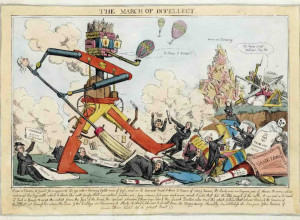September 6, 2011 |
Banned, Burned, Seized, and Censored
1942 poster
"Traditionally, censorship exhibitions start with John Milton's 'Areopagitica' and then provide a list of banned books," said Ransom Center Assistant Director and Curator for Academic Programs Danielle Sigler. "This approach gives you perspective on which books have been banned over time, but it doesn't explain why or how censorship took place. This exhibition focuses on how censorship happens in one country, during a particular era."
The era in question is the Interwar period in America, when the ugly hand of censorship was at its most formidable. The exhibit seeks to answer the question, "How did hundreds of thousands of books, pictures, plays, and magazines come to be banned, burned, seized, and censored in the span of less than 30 years?"
To illustrate this process, the exhibit will feature over 200 items from the Ransom Center collections, focusing particularly on their Morris Ernst materials. Ernst was the lawyer who successfully defended Ulysses in its 1933 trial for obscenity. His papers, owned by the Center, will be open for research in late 2011 at the conclusion of a grant-funded project to catalog their contents. The exhibit will also feature manuscripts edited for obscenity and pirated editions of works such as Ulysses and Lady Chatterley's Lover.
Pirated edition of Lady Chatterley's Lover
The New York Society for the Suppression of Vice, the New England Watch and Ward Society, the Book-of-the Month Club, the Post Office Department and the Treasury Department, will all also make appearances.
Banned, Burned, Seized, and Censored will run from September 6, 2011 through January 22, 2012.
(Images are courtesy of the Harry Ransom Center.)
















